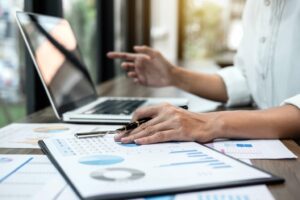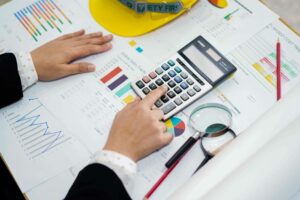
What these assets all have in common, that also differentiates them from current assets, is that they are not going to turn into cash any time soon and their connection to revenue is indirect. With inventory, we saw a direct match between the cost of the product and the sales revenue. Rent, insurance, what is plant assets and wages are examples of period costs that we match to revenues by posting them to the income statement accounts in the same period as the revenue, using time as our method of matching.
Used in Business Operations

18,000 USD must be charged to the plant asset account for every financial year as a https://www.bookstime.com/ depreciation expense. The non-current assets are the company’s long-term assets that last for many years and deliver economic benefit. There is a further classification of tangible and intangible non-current assets. Furniture and fixtures cover items like desks, chairs, tables, shelving, cabinets, and lighting fixtures that create functional workspaces.

What is a Plant Asset? Definition and Real-World Examples
- Even in technology sectors, plant assets can include server farms, computer hardware, and office spaces that house research and development.
- We should be wary of any indications of impairment such as a downturn in business which suggests that the plant assets may not be able to generate as much value as they could before.
- They are usually land and building, plant and machinery that may be fixed or movable, or any other equipment that can be categorized as the same.
- This cost would be capitalised and added to the asset’s book value on the balance sheet.
- Plant assets are not intended for resale; they are acquired and maintained to support operational needs consistently.
Regular reassessment ensures that financial statements reflect the true value of assets. Compared to Exxon’s total assets of over $354 billion for the period, PP&E made up the vast majority of total assets. Some of the company’s fixed assets include oil rigs and drilling equipment.
Vehicles
- Property, Plant, and Equipment (PP&E) represent the tangible assets utilized by businesses in their daily operations.
- From land and buildings to machinery and vehicles, these assets support a company’s core functions, offering value over multiple years and requiring careful management and accounting.
- In contrast, plant assets are long-term assets like buildings, machinery, and equipment that contribute to the company’s core operations over multiple years.
- Depreciation is a crucial accounting practice as it allocates the cost of an asset across its useful life, matching the expense with the revenue it helps generate.
- As non-current assets, plant assets play a continuous role in operations, with their value recorded at historical cost, less accumulated depreciation.
Regardless of the company you’re analyzing, plant assets tend to be assets = liabilities + equity those held for long-term use and depreciated over their useful lives. As time goes on, plant assets wear down and must be replaced, although most companies try to extend useful life for as long as possible. Depreciation expenditures, on the other hand, are the appropriate part of the cost of a company’s fixed assets for the time period. Depreciation is a non-cash expenditure that decreases the company’s net profits and is recorded on the income statement.
Popular Resources
- Therefore, the company would record the machine at £110,000 as the initial cost.
- Regular reassessment ensures that financial statements reflect the true value of assets.
- Finally, if required, the business or the asset owner has to book the impairment loss.
- A new press technology has just launched in the market, and the company owner decided to acquire the machine.
- Most companies, especially those that run fully in-house and do not rely on other parties for production or processing, require land.
This ensures the balance sheet presents a realistic view of the asset’s current value and prevents overstating assets. PP&E may be liquidated when a company is experiencing financial difficulties. Selling property, plant, and equipment to fund business operations may signal financial trouble. Companies can also borrow from their PP&E as a floating lien, meaning the equipment can be used as collateral for a loan.
Even office equipment like computers or printers can qualify as plant assets, as they contribute to internal operations that support revenue generation. Plant assets are not intended for resale; they are acquired and maintained to support operational needs consistently. Plant, as part of Property, Plant, and Equipment (PP&E), plays a crucial role in the operational capacity and efficiency of a company.

It is interesting to note that IAS 16 has pointed out that a plant asset purchased for safety or environmental reasons could qualify as a plant asset even if it does not contribute to revenue. There are different methods of depreciation that a business entity can use. Many business entities use different depreciation methods for financial reporting and tax purposes.

Impairment

To be classified under the category of this kind of asset, it should be of tangible nature, which means that it should have the feature of being seen or touched. The next plant assets characteristics is that it should be able to provide benefit to the business for more than one year. Plant assets are usually expensive, long-term investments made to underpin a company’s production process. Needless to say, they’re an enormously important part of producing goods and/or services in an economically efficient manner. Businesses must be especially careful in making these investments since buildings and land are immovable and can’t be easily substituted. Generally, plant assets are among the most valuable company assets and tend to be relied on greatly over the long term.